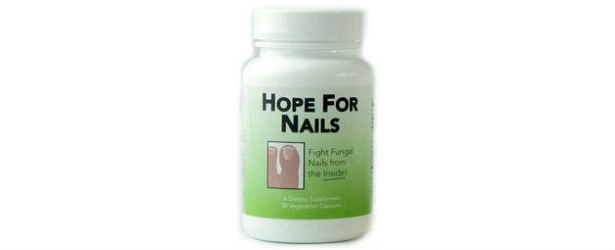
Proximal Subungual Onychomycosis
This one of the least common nail fungi in people who have healthy immune systems, but it is found very frequently in those whose immune system is compromised. Proximal subungual onychomycosis is different from most fungal infections of the nail because this form begins at the cuticle and works its way toward the tip of the nail.
 Just like other nail fungus infections, this fungus causes the nail to become disfigured. However, the disfigurement starts at the cuticle and works its way from there. This type of fungal infection is more likely to affect the nail bed early in the infection, which causes the nail to develop ridges and bumps. Because the infection starts at the cuticle, the nail may become detached and fall off, which can expose the nail bed to more significant infection.
Just like other nail fungus infections, this fungus causes the nail to become disfigured. However, the disfigurement starts at the cuticle and works its way from there. This type of fungal infection is more likely to affect the nail bed early in the infection, which causes the nail to develop ridges and bumps. Because the infection starts at the cuticle, the nail may become detached and fall off, which can expose the nail bed to more significant infection.
Most cases of proximal subungual onychomycosis are caused by the same dermatophyte as distal subungual onychomycosis. This type of infection is not only caused by a fungus, but it can also be caused by a mold as well. Another symptom that is characteristic of this specific type of fungal infection is swelling and redness around the nail. This area can become extremely swollen and can start to ooze puss. Typically, this is more common in infections caused by molds than it is fungus.
Because of the strange characteristics of this specific fungal infection, it is commonly misdiagnosed as a bacterial infection. Antibiotics do not have the ability to kill fungi so the antibiotics given will not work to get rid of the infection. To properly destroy molds, yeasts, and dermatophytes an anti-fungal medication must be used.
This type of fungal infection typically occurs in those with an unhealthy immune system. It is most common in those with HIV. This is so common, that if a patient is present with this type of fungal infection and no other symptom, a doctor will likely request a test for HIV.
It is important to note that just because you have a diagnosis of proximal subungual onychomycosis, does not mean you will receive a diagnosis of HIV.
Lamisil
The only method of treating proximal subungual onychomycosis is to take an anti-fungal medication, typically given in pill form. If the infection is determined to be caused by dermatophytes, trichophyton rubrum, or trichophyton mentagrophytes, your doctor might prescribe Lamisil. The typical dose for Lamisil is one 250 mg pill per day for 6 weeks if the infection affects the fingernail. If the infection affects the toenail, the treatment is typically one 250 mg pill per day for 12 weeks.
Itraconazole or Sporanox
Another type of treatment that is commonly used is Itraconazole, or Sporanox. This treatment is used when the type of fungus is unknown. This is because it is effective against almost all fungal infections. This treatment is typically more expensive than other medications, but it works great because it is a broad-spectrum antifungal.
Fluconazole
Fluconazole, which is also known as Diflucan, is not used as often but is effective in treating proximal subungual onychomycosis. This medication does stop the growth of the fungus, but it does not kill existing fungus. This makes other medications more effective in getting rid of the fungus.
Overall, Diflucan is known to slow down or stop the growth of the infection so that the body can take care of the infection. For someone who is immune deficient or who has a weakened immune system, this is not a great option, as they are not as able to fight off an infection.
TOP 5
NAIL FUNGUSTreatments |
|||||
| Fungavir | ZetaClear | Nail-Rx | H-Nail Fungus | Dr. G’s | |
|---|---|---|---|---|---|
| 1 | 2 | 3 | 4 | 5 | |
| Price (1 bottle) Price (6 bottles) Best Value |
$49.95 $139.70 |
$49.95 $299.70 |
$19.95 $119.70 |
$69.95 $419.70 |
$14.99 $89.70 |
| Overall Rating | 99.40% | 81.60% | 79% | 72.90% | 69.10% |
| Effectiveness |





|





|





|





|





|
| Speed of Results | Extremely Fast | Good | Average | Average | Slow |
| Quality of Ingredients | Premium | Good | Good | Average | Unknown |
| Customer Satisfaction Evaluation | 99.30% | 82.50% | 78.90% | 76% | 69% |
| Safety Evalutation | Safe for Use | Safe for Use | Safe for Use | Safe for Use | Safe for Use |
| Customer Service Rating |





|





|





|





|





|
| Reorder Rate | Highest | Good | Good | Average | Average |
| Return Policy | Risk Free | 10% Restocking fee | 25% Admin Fee | Risk Free | No Guarantee |
| Success Rate | 99.20% | 80% | 76.50% | 72.30% | 69% |

 Subscribe Now
Subscribe Now











